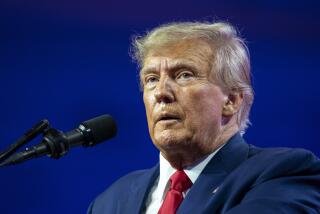Insiders Sell Less, Buy More, Sending Bullish Stock Signals
- Share via
Corporate insiders seem to be giving their own shares a resounding vote of confidence: Selling by insiders has plunged in recent weeks while buying has risen, new data show.
The result is that key measures of insider sentiment toward the market have reached their most bullish levels in three years.
Company insiders, a group that includes executives, directors and large shareholders, sold $667 million of their own stock in September, an 80% drop from the $3.3billion sold in August, according to Thomson Financial/Lancer Analytics.
That was the lowest monthly sales volume since December 1994.
Meanwhile, open-market purchases by insiders--that is, buying at market prices, rather than via favorably priced stock option grants--rose 13% in September to $184 million from $163 million in August.
The data suggest that many insiders believed their stocks got too cheap after the Sept. 11 terrorist attacks, analysts said.
Insiders’ relatively bullish stance may be signaling “a significant buying opportunity” for investors in general, said David Coleman, editor of Vickers Weekly Insider newsletter, which also tracks executive trading.
“Executives know more about the outlook for their companies than any outside analyst can ever hope to glean,” Coleman noted.
Analysts track insiders’ stock purchases and sales for clues about the future of specific companies, and in the aggregate for signals about the market.
Insiders’ transactions are public because they must file the information with the Securities and Exchange Commission.
September’s trend of more buying and less selling has carried into October, even as stock prices have rebounded. Insider open-market purchases this month have outnumbered sales for three straight weeks, Coleman said.
Typically, sales transactions swamp purchases by more than 2 to 1, in part because insiders often get shares through means other than the open market, including stock option grants.
Coleman said his rolling eight-week selling-to-buying ratio of insider transactions sank to 1.6 as of Friday, from 1.9 as of Oct. 12 and 2.6 as of Oct. 5. In both of the last two weeks, the one-week ratio has been just 0.8.
Based on historical trends, a “neutral” reading is 2.25, or 21/4 sales for every purchase, and any reading below 2 is considered bullish for the market, Coleman said.
Insiders also have been filing relatively few forms this month indicating an intention to soon sell shares, Coleman said, meaning the bullish pattern could continue.
In September, a ratio measuring the dollar volume of insider sales to purchases plummeted to its lowest level since September 1998, said Lon Gerber, director of research at Scottsdale, Ariz.-based Thomson Financial/Lancer Analytics.
That ratio, which looks at how many dollars’ worth of shares are being sold for every $1 bought (rather than at the number of transactions made), fell to $3.63 in September from $20.09 in August.
The ratio has been below $5 only three other times over the last five years, Gerber said: December 1996, April 1997 and September 1998.
The blue-chip Standard & Poor’s 500 index was higher six months after each of those “oversold” readings, by an average of 20%, he said.
Since the stock market reopened Sept. 17, insider stock purchases have been made across a broad swath of industries, analysts say.
Companies with bullish insider patterns in recent months include United Technologies Corp., Hartford Financial Services Group and Calpine Corp., analysts say.
As for industries, Gerber said aerospace and defense insiders have been among the active buyers, including at Boeing Co., Goodrich Corp. and BE Aerospace Inc.
Other bullish industries: insurers such as Chubb Corp., electric utilities including AES Corp. and online advertising firms such as DoubleClick Inc.
Still, by historical standards the recent uptick in aggregate insider buying does not represent a stampede, analysts say.
Total September open-market purchases were the highest of any month this year, Gerber said, but they were well below the monthly average of $296 million over the last five years.
“I’d be much more encouraged if we did see more buying,” he said.
One factor that may have spurred purchasing in September was the Securities and Exchange Commission’s decision to temporarily let insiders buy back shares even if they had previously sold at a higher price within the last six months, analysts said.
This type of activity would normally be a violation of the SEC’s “short-swing profit rule” and would require all gains to be disgorged.
Post-attack patriotism might also have been a factor, some said.
“September was a special month, so it’s tricky to cull the real value shoppers from the real patriots,” said Paul Elliott, an analyst at Thomson Financial/First Call.
“Then again, I’ll take either.”
More to Read
Inside the business of entertainment
The Wide Shot brings you news, analysis and insights on everything from streaming wars to production — and what it all means for the future.
You may occasionally receive promotional content from the Los Angeles Times.










